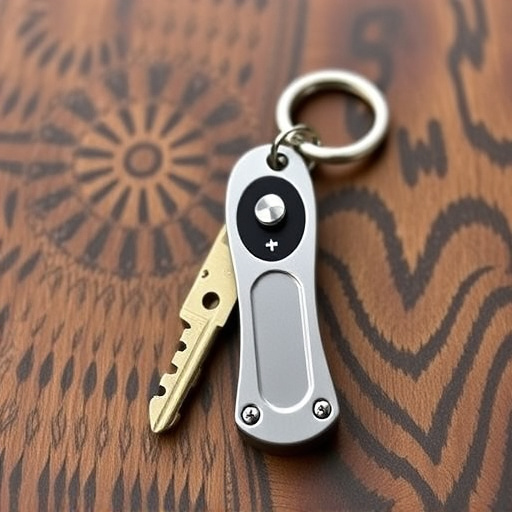Selecting durable materials like high-carbon steel for hardness and stainless steel for corrosion resistance ensures a long-lasting self-defense keychain. Coatings enhance wear, while thoughtful design prioritizes ease of use and grip for effective deployment in various settings, adhering to safety guidelines and local laws regarding concealed weapons.
“Discover the ultimate self-defense accessory with a metal spike keychain—a compact yet formidable tool designed to provide peace of mind. This article explores the art of crafting durable materials for keychain weapons, focusing on choosing the right metal alloys. We’ll delve into design considerations ensuring maximum effectiveness and safety features that promote responsible carry practices. By understanding these aspects, you can make an informed decision about this innovative self-defense keychain tool.”
- Choosing Metal Alloys for Optimal Durability
- Design Considerations for Effective Self-Defense
- Safety Features and Responsible Carry Practices
Choosing Metal Alloys for Optimal Durability
When crafting a metal spike keychain for self-defense, selecting the right alloy is paramount for ensuring both effectiveness and longevity. Durable materials for keychain weapons should exhibit exceptional strength-to-weight ratios and resistance to corrosion. High-carbon steel is a popular choice due to its hardness and ability to maintain an edge. However, for a more corrosion-resistant option, stainless steel is ideal, especially varieties like 304 or 420, known for their superior durability in various environments.
These alloys offer not just strength but also flexibility in design. The right metal allows for intricate patterns and shapes without compromising structural integrity. Moreover, certain metals can be treated with coatings to enhance their resistance to wear and tear, further extending the lifespan of your self-defense keychain tool.
Design Considerations for Effective Self-Defense
When designing a metal spike self-defense keychain tool, the focus should be on both effectiveness and reliability. Key considerations include choosing durable materials that can withstand regular use and offer superior strength. Stainless steel is an excellent option due to its resistance to corrosion and high tensile strength, ensuring the tool remains functional in various environments.
Additionally, the design should prioritize ease of use and strategic placement of the spike for optimal defense. A well-designed keychain should allow for quick deployment without compromising comfort or balance in the user’s hand. This requires thoughtful engineering to balance weight distribution and ensure the spike can be effectively used in self-defense scenarios, making it a reliable companion for personal safety.
Safety Features and Responsible Carry Practices
When carrying a metal spike keychain for self-defense, prioritizing safety is paramount. These tools are designed to be effective but also require responsible handling. Durable materials like high-grade steel ensure the weapon’s longevity and reliability in critical situations. Users should familiarize themselves with local laws regarding concealed weapons and always carry them responsibly, ensuring they are not easily accessible to prevent accidental deployment or misuse.
Proper training and practice are essential. Learning how to control and deploy the keychain spike effectively can make all the difference in a self-defense scenario. Responsible carry practices include keeping the device locked when not in use, storing it in a secure location, and being mindful of your surroundings to avoid attracting unnecessary attention.
When it comes to self-defense tools, a metal spike keychain offers a unique blend of portability and power. By selecting the right alloys and incorporating thoughtful design elements, these keychains become durable materials for personal safety. With proper safety features and responsible carry practices in place, individuals can confidently equip themselves with this innovative defense mechanism, ensuring peace of mind in today’s world.
